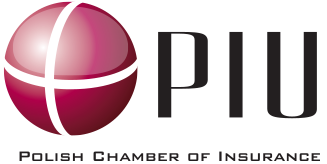
New trends have emerged in insurance fraud. Increasingly high levels of detection mean that criminals are looking for new ways to commit crimes. An analysis of their methods shows that they are increasingly using life insurance. New challenges associated with cyber security are also included in Section I. In Section II, insurance companies are observing a renaissance of certain seemingly forgotten methods of motor insurance fraud. Overall, the number of offences is dropping but their value has increased systematically over the last few years. We present the latest analysis of data relating to offences detected in 2016.
Insurance fraud in Section I
In Section I, insurance company employees observed a 12% drop in the number of offences (from 836 to 738), however, the value of offences detected increased by 21% from PLN 11,343,955. These include both cases classified as attempted as well as actual fraud, identified in the course of internal procedures and reported to law enforcement agencies.
In 2016 in Section I, insurance companies paid out PLN 18.3 billion in the form of benefits. The irregularities detected account for approx. 0.2% of the sum paid out. The average value of a case of life insurance fraud exceeds PLN 18,000.
For years, the most common and most serious crime, in terms of value, has been the extortion of benefits for the death of the insured party. In 2016, the proportion of this method reached a record high of 80%. In 2016, cases associated with hospitalisation, surgery, disabilities and health impairments caused by accidents were also frequently detected.
Methods used by the perpetrators
A very popular fraud method detected was the reporting of false circumstances relating to injuries. This particularly applies to people participating in sporting activities. Dishonest customers – professional sportsmen or women, report false information to avoid a refusal to pay benefits because their sports discipline is subject to being excluded from liability.
It should also be pointed out that in 2016, record-breaking levels of fraud outside the area of direct payment of benefits were observed. High values have been observed in this area for several years, however, until now they did not exceed PLN 10 million – in 2016 they amounted to PLN 19 million.
New challenges
In Section I insurance companies are facing new challenges associated with generational change and cybercrime. The different requirements of the future Y and Z-generation customers herald a revolution in the life insurance market. There will be problems that have long been known in the banking sector including, among other things, the theft of the identity of insured people in order to misappropriate the benefits due to them. New electronic channels of communication with customers pose many threats associated with the correct identification of the customer.
Insurance fraud in Section II
In Section II the number of offences dropped by 28% but the value of the crimes increased by 18%. In 2016, employees of Section II insurance companies recorded 9,515 offences totalling PLN 211.9 million. The average value of the crime amounted to approx. PLN 22,000. The total value of the cases accounts for 1.15% of the value of the compensations and benefits paid out.
Methods used by the perpetrators
In 2016 approx. 1,800 attempts to extort benefits for personal losses for the amount totalling nearly PLN 24 million were detected. Similarly to 2015, survey participants have been reporting a drastic increase in the value of personal losses for several years. This applies to increasing the extent of bodily injuries being declared, simulating mental illnesses resulting from alleged post-traumatic shock, and increasing the number of people injured in accidents by making false declarations. Luckily this kind of practice is not very successful.
Insurance companies are also observing a renaissance of certain seemingly forgotten methods of motor insurance fraud. A method of deliberately causing damage has recently been revived. One of its frequent variations, used by specialised perpetrators, is damage on roundabouts and complex crossroads in large cities. The perpetrators take advantage of the mistakes and distraction of other drivers and cause a collision in which they are the aggrieved party. Next, the cars – loss generators – are fixed temporarily and used again. Thanks to data analysis methods, insurance companies are able to easily detect this dirty business.
New challenges
Insurance companies must prepare themselves soon for, among other things, the technical revolution of distributing and processing insurance tasks. An exceptionally fast development of mobile devices and fintech/insurtech solutions poses completely different requirements. Cybercrime and socio-technical threats known in the banking sector generate completely new challenges for anti-fraud teams and systems.
Cross-border crime is also an important challenge. Insurance companies should prepare themselves to check documents and identities of potential customers – non-residents.
Detailed information can be found in the analysis of data relating to offences detected in 2016 in connection with the activities of insurance companies that are members of the Polish Insurance Association. >>>
